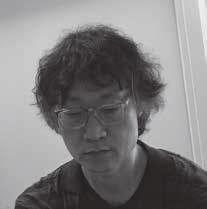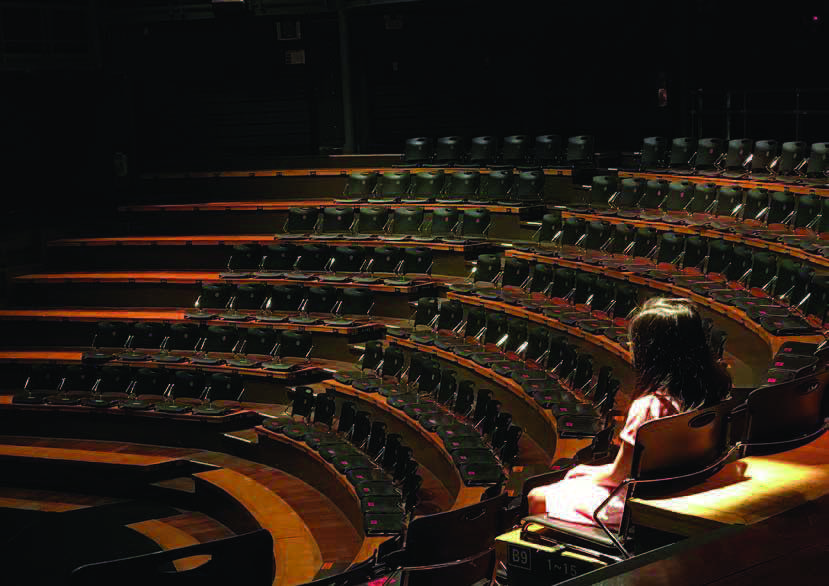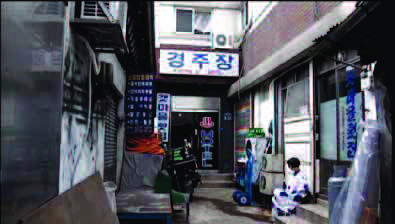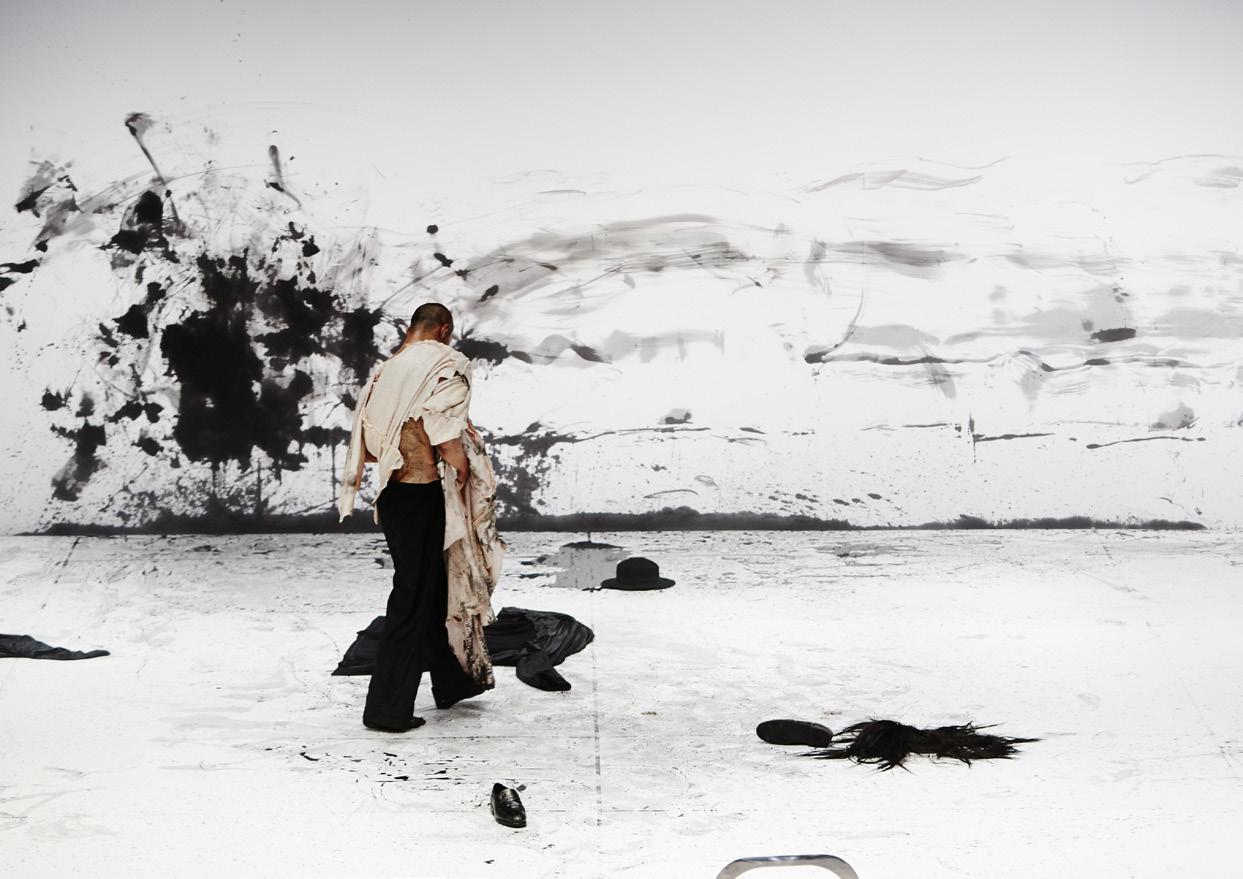Performance Info
SEO Hyun Suk (Performance director. Video artist. Performance critic. Professor.)
: Only disappearance is valid on stage.
You have been involved in a wide range of projects and activities. What are they related to one another?
I’ve always been interested in theatre and performance. While studying video theory and creation in Korea and America, I used to take acting classes or perform as a performer in my colleague’s work. And I started directing performances in 2004.
In my study or work of video, the subject that attracted my attention was contemplation on the media. It naturally moved into contemplation on the medium of stage under the influence of a new attempt that started in European dance and theatre. Feeling the necessity of exploring foreign works, I began to write critical articles and have been working within the interaction between creation and writing.
What is the biggest difference between performance and video from your experience of these two media? What do you think the attractive point or possibility of performance is especially?
As a person who studied video, the most fatal problem as well as the most fascinating part of performance I find are spontaneity and disappearance. In the beginning of my directing work, I was quite shocked by the fact that creative activities take place in a physical space in real time and that every performance provides audiences with different and non-repetitive experience. But now I understand this absolute disappearance as a very attractive part of performance. Similarly, I also realized that film was not a permanent medium. Spontaneous interaction between viewers and art works is the characteristic of the media. Besides, I came to keep the fact in mind that spontaneous experience of audiences itself creates art most importantly in my directing. Further, I seek possibilities of maximizing the senses with the instantaneity of irreversible, unrestorable and unrepeatable experience.
Since 2010, I have investigated the way of maximizing the audience’s individual senses. In this methodology, each member of audience becomes isolated, out of the support or influence of the temporary community, which is ’audience’, so that they can focus on their own senses. I tried this methodology in a few theatre works, but it was more effective outside the theatre.
Many people think that building a temporary community or union of the audience is a significant role as well as meaning that theatre has. But your way of approaching audiences looks very different.
’Isolation of audiences’ is an important path to keep a distance between the audience and the work. It also helps evoke and reestablish the most basic and fundamental conditions of theatre. In this regard, I believe an attempt to reorganize the theatrical environment can lead to a powerful system to reconsider social and communal conditions beyond arts.
Of course I am not interested in just keeping a distance the audience arbitrarily. Whenever I work on performance, I ask myself the question: How audiences reorganize their own senses and what kind of compromise is achieved in given theatrical circumstances when the relationship between the work and the audience is fractured? In other words, for me, ’theatre’ is a multilayered phenomenon of compromise and re-awareness that audiences should have in the middle of a mixture of reality and fiction.
As a creator of performance and video as well as a critic who turn this work into language while keeping some distance from the work field, what are the key elements you focus on?
What I emphasize the most in performance is ’sense’, the physical sense of the audience that cannot be embodied by any other medium. In order to reconstruct and maximize the audience’s sense, ’isolation’ and ’disappearance’ are the keywords to be considered consistently as mentioned above. It is a question of the subject as well as the form, namely, an instrumental concept that promotes the linkage between the subject and the form.
For me, this concept is also linked to reconsidering history comprehensively. Reenactment theatre is based on a specific type of performance directing method following the influences of European romanticism in 18-19th century, in which a fictional situation is staged. Since the end of 20th century, pioneering artists have approached the fundamental conditions of theatre by excluding it. Similarly in Korea, a form of generally defined theatre is in line with Korea’s modernization process. The most important challenges in contemporary arts include comprehensive reillumination and reconsideration of modernity. How a theatrical setting can be treated at the level of individual audience is directly connected to the question how a modernist setting has reconstructed individual senses and experiences. Accordingly, my performance projects deal with the collapse of theatrical setting and that of modernist setting both in the aspects of form and subject.
The latest work The Angel, Tenuously Named (2017) starts from the situation in which usual theatrical settings no longer operate. It is particularly related to the collapse of political settings that Korean society experienced lately. To present the fear and trauma we might feel to see the political settings that have been accumulated since the modernization period collapsing before our eyes on stage, I had to give up blind faith on theatrical settings. My recent video work, an architecture documentary, is about the ideal of modernism and its decline in the Asian context in the 1950-70s. This work brings up an issue of how modernism has systematized the operation method of society and individuals through performance and video works.
The recent work you mentioned is your signature performance piece that represents your idea best?
I have worked on site-specific projects maximizing the audience’s spontaneous senses since 2010. Meanwhile, my thoughts of theatre have changed and the last work reflects this idea best, I think.
The Angel, Tenuously Named, set in a one-to-one protocol between audiences and performers, is meaningful in that it attempted to address the problem of reconsidering the most fundamental conditions of theatre in the architectural setting, theatre. There was an important question, which was not covered in other site-specific works, of what the audience face, brought to the innermost space, theatre. And the answers to it were isolation and death that were embedded in other works as well. This sense that is expressed as an inevitable sense of loss in the process of recognizing history is the goal, process as well as output of my work. But in a way, it is also a sort of attitude towards life.
Please tell us about your current projects and plans for the near future.
Some say that I have done enough "experiments of form" about continuously using the condition of one-to-one encounter between audiences and performers for several years. But it seems more unnatural to rediscover the necessity of directing reproductive things on the proscenium stage. I don’t mean to exclude the outdated art forms unconditionally. What matters to me is to keep thinking of several modern settings.
Currently I am working on a video project reconsidering multiple aspects of modern art when it was brought to Asia in the 1950-60s. It deals with the subject of Asian modernist architecture and establishment of national identity as well as the exploration of film aesthetics along with review of Japanese art film in the 1960s.
* Photo "The Angel, Tenuously Named" copyright : Namsan Arts Center
Production Details
- Director
SEO Hyun Suk
Reference
- E-maillucida@yonsei.ac.kr












 PREV
PREV
.jpeg)
.jpg)
_(c)포스(FORCE).jpg)
_(c)장석현_코끼리들이 웃는다(SUKHYUN JANG_ELEPHANTS LAUGH).jpg)
.jpg)
.jpg)
_(c)한받(Hahn Vad).jpg)
_(c)비주얼씨어터 꽃(CCOT)(1).jpg)
_(c)봉앤줄 (BONGnJOULE)(1).jpg)
_(c)대한민국연극제 2019 (Korea Theater Festival 2019)(0).jpg)
_(c)몸꼴(Momggol)(1).jpg)
.png)
2018MODAFE_Taemin Cho (2).jpg)











